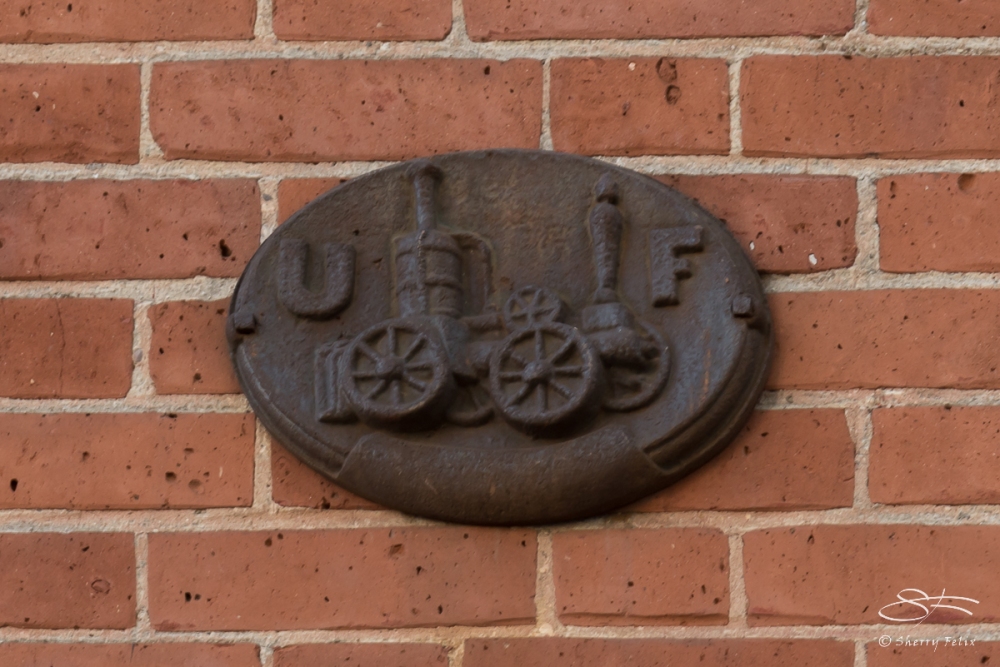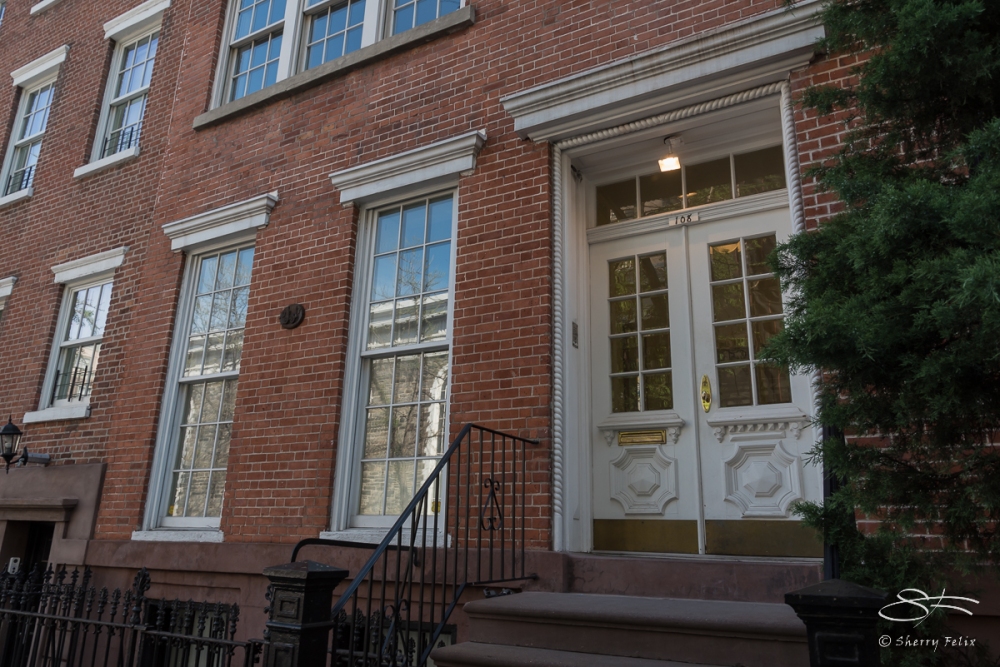Fire insurance marks were metal plaques marked with the emblem of the insurance company which were affixed to the front of insured buildings as a guide to the insurance company’s fire brigade. These identification marks were used in the eighteenth and nineteenth century in the days before municipal fire services were formed.
Subscribers paid firefighting companies in advance for fire protection and in exchange would receive a fire mark to attach to their building. The payments for the fire marks supported the firefighting companies. Volunteer fire departments were also common in the United States, and some fire insurers contributed money to these departments and awarded bonuses to the first fire engine arriving at the scene of a fire.
Firefighting used to be a private for-profit industry. In the 1800’sin cities like New York and Baltimore, there were private “clubs” or “gangs” who were in charge of putting out fires. The infamous Boss Tweed started his illustrious political career at a volunteer fire company. The first club at the scene got money from the insurance company and sometimes loot. So, they had an incentive to get there fast. They also had an incentive to sabotage competition. They also often ended up getting in fights over territory and many times buildings would burn down before the issue was resolved.
These historic c. 1850 buildings on Washington Place, between 6th and 7th Avenues, have fire insurance marks.
For Norm’s Thursday Doors 6/2/2016.

Fire Mark at 108 Washigton Place, NYC 5/29/2016



These two c. 1899 buildings (stable and studio) are on West 4th Street on the other side of the fire marked buildings.



So interesting, I never knew about that!
LikeLiked by 1 person
History is fun. 🙂
LikeLiked by 1 person
Absolutely!
LikeLike
Nice doors and very interesting history about firefighters. The fire station near my house may be partially closed due to budgetary problems; perhaps we may end up paying individually for fire services and I might to have to start looking for a plaque to hang 🙂
LikeLiked by 1 person
Thank you. I hope we don’t need a fire marks again. It does seem we are moving backwards. Todays presidential race is an example. But let’s not go there 😦
LikeLiked by 1 person
Fascinating – love the history behind doors. Now off to look at more plaques as like Jo and Janet think it’s lovely.
LikeLiked by 1 person
Glad you like it. I usually put sources and links. The one to the fireman’s marks is a good one.
LikeLiked by 1 person
Agree – fascinating especially that so many countries took a similar approach.
I wonder if some of the more dodgy companies deliberately started fires to encourage more to sign up?
LikeLiked by 1 person
Very interesting bit of history – and beautiful images to illustrate this!
LikeLike
Thank you Carol.
LikeLiked by 1 person
I love the fire mark, Sherry. The doors are impressive, too.
janet
LikeLiked by 1 person
Thanks
LikeLike
It looks a lovely neighbourhood. I’d like more close ups of the plaques. That one is very handsome. 🙂
LikeLiked by 1 person
I should have. Instead I provided a link to many more. 🙂
LikeLike
Ah! Sorry- I missed that 😦
LikeLike
I didn’t know this. Thanks for the cool post about fire marked doors—and the cool photos. 🙂
LikeLiked by 1 person
Thanks Otto.
LikeLiked by 1 person
Great photos and history. Your post reminded me of the scene in the movie ‘Gangs of New York’ when the rival fire-fighting gangs were too busy fighting over a burning building to put out the fire.
LikeLiked by 2 people
Oh yes! I remember that.
LikeLiked by 1 person
Fascinating history!
LikeLiked by 1 person
Thanks.
LikeLike
Thanks for sharing this Sherry 🙂
LikeLike
Your welcome. I will try to find more fun door history.
LikeLike
Interesting information and excellent shots. I was a fire fighter for 10 years. But always on a voluntary basis. These houses and doors could be located in England as well.
LikeLiked by 2 people
That is commendable. There are a lot of good firefighters out there. Like the police force, a few bad ones that turn up in poor neighborhoods (see my comment about firefighters in the ’60s in the East Village).
LikeLiked by 1 person
Never heard anything like this in my time. But the main reason could be that I was living in a small village during this time. And the voluntary fire brigade was the only one in this area. Could be different in mega cities.
LikeLiked by 1 person
Beautiful photos, great history!
LikeLike
Thank you very much.
LikeLike
Thanks for the history lesson! That’s pretty interesting… firefighters fighting for business. And now we take it for granted that they will save us.
LikeLiked by 1 person
In the 60’s some firemen had bad reputations for looting and destruction. I witnessed it the East Village. I hope that is no longer the case.
LikeLiked by 1 person